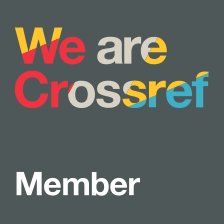Gabrijela Popović – Faculty of Applied Management, Economics and Finance, Jevrejska 24, Belgrade, Serbia
Miodrag Brzaković – Faculty of Applied Management, Economics and Finance, Jevrejska 24, Belgrade, Serbia
Darjan Karabašević – Faculty of Applied Management, Economics and Finance, Jevrejska 24, Belgrade, Serbia
Srđan Novaković – Faculty of Applied Management, Economics and Finance, Jevrejska 24, Belgrade, Serbia
Pavle Brzaković – Faculty of Applied Management, Economics and Finance, Jevrejska 24, Belgrade, Serbia
7th International Scientific-Business Conference – LIMEN 2021 – Leadership, Innovation, Management and Economics: Integrated Politics of Research – CONFERENCE PROCEEDINGS, Online/virtual, December 16, 2021, published by the Association of Economists and Managers of the Balkans, Belgrade; Printed by: SKRIPTA International, Belgrade, ISBN 978-86-80194-54-7, ISSN 2683-6149, DOI: https://doi.org/10.31410/LIMEN.2021
Keywords:
MCDM;
PIPRECIA method;
WISP method;
Tourism products;
Republic of Serbia
Abstract
The main intention of this paper is to emphasize the crucial tourism products that will contribute to the tourism development of the Republic of Serbia. With that aim, the Multiple-Criteria Decision-Making – MCDM approach is proposed based on the PIvot Pairwise RElative Criteria Importance Assessment – PIPRECIA and the Simple Weighted Sum Product – WISP methods. PIPRECIA method is applied for defining the criteria weights, while the WISP method is used for ranking the considered tourism products. The final results are reliable and the tourism product City break is emphasized as the one with the greatest potential.

Download file
LIMEN Conference
Creative Commons Non Commercial CC BY-NC: This article is distributed under the terms of the Creative Commons Attribution-Non-Commercial 4.0 License (https://creativecommons.org/licenses/by-nc/4.0/) which permits non-commercial use, reproduction and distribution of the work without further permission.

References
Ahmad, U. (2016). Application of multiple criteria decision making techniques in tourism and hospitality industry: A systematic review. Transformations in Business & Economics, 15(1), 37.
Alptekin, G. I., & Büyüközkan, G. (2011). An integrated case-based reasoning and MCDM system for Web based tourism destination planning. Expert Systems with Applications, 38(3), 2125-2132. https://doi.org/10.1016/j.eswa.2010.07.153
Keršuliene, V., Zavadskas, E. K., & Turskis, Z. (2010). Selection of rational dispute resolution method by applying new step‐wise weight assessment ratio analysis (SWARA). Journal of business economics and management, 11(2), 243-258. https://doi.org/10.3846/jbem.2010.12
Lin, C. L. (2020). Establishing environment sustentation strategies for urban and rural/town tourism based on a hybrid MCDM approach. Current Issues in Tourism, 23(19), 2360-2395. https://doi.org/1 0.1080/13683500.2019.1642308
Lin, C. L., & Chang, K. C. (2020). Establishing the service evaluation and selection system for emerging culture festival events using the hybrid MCDM technique. Current Issues in Tourism, 23(18), 2240- 2272. https://doi.org/10.1080/13683500.2019.1665628
Liu, C. H., Tzeng, G. H., & Lee, M. H. (2012). Improving tourism policy implementation–The use of hybrid MCDM models. Tourism Management, 33(2), 413-426. https://doi.org/10.1016/j.tourman.2011.05.002
Liu, C. H., Tzeng, G. H., Lee, M. H., & Lee, P. Y. (2013). Improving metro–airport connection service for tourism development: Using hybrid MCDM models. Tourism Management Perspectives, 6, 95-107. https://doi.org/10.1016/j.tmp.2012.09.004
Pamučar, D., Stević, Ž., & Sremac, S. (2018). A new model for determining weight coefficients of criteria in MCDM models: Full consistency method (FUCOM). Symmetry, 10(9), 393. https://doi. org/10.3390/sym10090393
Popovic, G., Stanujkic, D., Brzakovic, M., & Karabasevic, D. (2019). A multiple-criteria decision-making model for the selection of a hotel location. Land use policy, 84, 49-58. https://doi.org/10.1016/j. landusepol.2019.03.001
Rezaei, J. (2015). Best-Worst Multi-Criteria Decision-Making Method. Omega, 53, 49-57. https://doi. org/10.1016/j.omega.2014.11.009
Rezaei, J. (2016). Best-worst multi-criteria decision-making method: Some properties and a linear model. Omega, 64, 126-130. https://doi.org/10.1016/j.omega.2015.12.001
Rigall-I-Torrent, R., & Fluvià, M. (2011). Managing tourism products and destinations embedding public good components: a hedonic approach. Tourism Management, 32(2), 244-255. https://doi. org/10.1016/j.tourman.2009.12.009
Saaty, T. L. (1980). The Analytical Hierarchy Process: Planning, Priority Setting, Resource Allocation. McGraw-Hill, New York.
Shannon, C. (1948). A Mathematical Theory of Communication. Bell System Technical Journal, 27, 379– 423 and 623–656.
Službeni glasnik RS (91/2006). The Strategy of the tourism development of the Republic of Serbia
Stanujkic, D., Popovic, G., Karabasevic, D., Meidute-Kavaliauskiene, I., & Ulutaş, A. (2021). An Integrated Simple Weighted Sum Product Method—WISP. IEEE Transactions on Engineering Management, 1-12. https://doi.org/10.1109/TEM.2021.3075783
Stanujkic, D., Zavadskas, E. K., Karabasevic, D., Smarandache, F., & Turskis, Z. (2017). The use of the pivot pairwise relative criteria importance assessment method for determining the weights of criteria. Journal of Economic Forecasting, 4, 116-133.
Stević, I., Stević, S. R., & de Jesus Breda, Z. M. (2019). Application of MCDM methods to tourism evaluation of cultural sites. In Cultural Urban Heritage (pp. 357-381). Springer, Cham. https://doi.org/10.1007/978-3-030-10612-6_24




